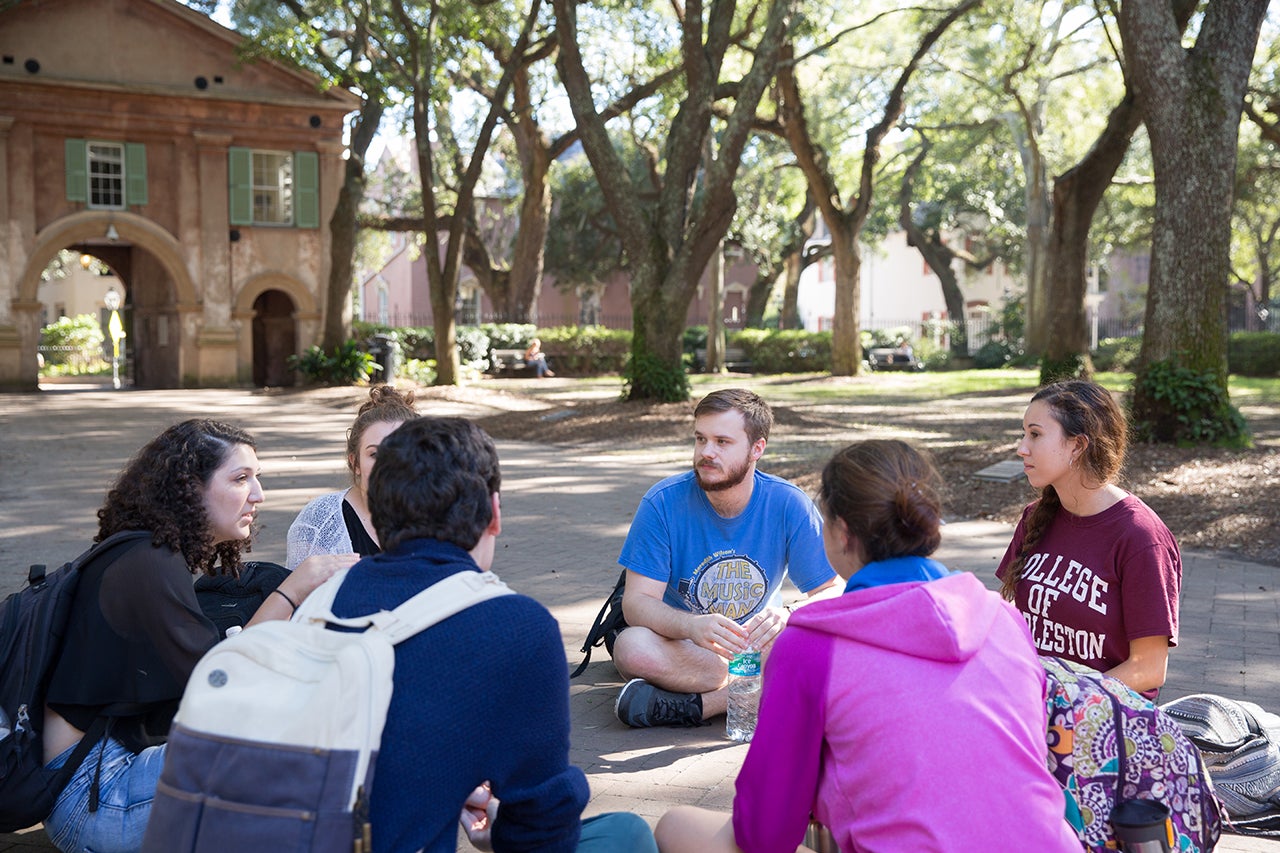No textbooks. No exams. No lectures.
(OK, a few lectures).
So what does Merissa Ferrara’s Wired & Inspired capstone course include? Assigned TED Talks and UpWorthy videos, daily entries in the Evernote app completed on students’ required iPads, and blogged reflections on individual and group projects are a few components. Ferrara also sends students to the streets to raise money for nonprofits, deliver gift cards and baked goods to strangers and pose daunting philosophical questions on city scaffolding.
[RELATED: Read the Post and Courier’s Andy Parras’ blog about the #CHSChalkboard project]
Every few weeks Ferrara lets students choose between two two-week challenges – for instance, in October students could either prepare for job interviews or get creative by redoing Upworthy and Ted Talks experiments meant to uplift and inspire friends, family and community members. Over the yearlong-course, students design and execute an intensive research project that highlights their written and oral communication skills.
“I want my students to realize not only who they are but what they’re capable of. They’re seniors graduating in May so I’ve been trying to set them loose to discover these things for themselves,” Ferrara said. “I had them write these tasks they thought were impossible on post-it notes the first day of class and we’ve been moving more and more of them over to the ‘done’ pile.”
While completing formidable real-world tasks is a defining piece of Wired & Inspired, the technology plays an equal role in both grading and student experience.
“I’ve gotten so much more comfortable editing video in iMovie and navigating YouTube since this capstone began,” said student Vaughn Postema. “It’s a skill I can confidently put on my resume, along with all the social media we’ve used to promote our efforts.”
Students’ efforts to promote their projects have worked. Two students, Kristin DeAngles and Ashley Bell, received local publicity for their “#CHSChalkboard” project, copied from a Ted Talks project by Candy Chang. The two wrote the beginning of a sentence, “Before I die…” on a large block of scaffolding and left dozens of blanks for passersby to fill in.
“We got great responses from the community,” DeAngles said. “The moment I really thought I did something impactful was when I watched a guy write on the wall ‘tell my dad I love him.’ People wrote really emotional things.”
Another student, Kara Cronin, has achieved more than 1,000 views for her video, called Operation Appreciation – Who Makes You Happy?, in which she asks five participants to think of someone who has positively impacted his or her life, then to read a letter expressing appreciation to the individual.
“The wired and inspired capstone has refueled and reenergized me, reminding me that I’m capable of accomplishing anything I set my mind to,” Cronin said. “Dr. Ferrara and my classmates have helped me to hone my skills to do what I’m most passionate about – making people happy. Through several projects I’ve taken on this year, I’ve seen my skillset grow.”
[RELATED: Watch Kara Cronin’s video on what makes people happy]
Yet another project, the Random Acts of Kindness Everywhere (RAKE) by student Maria Horn, requires Horn to think of unusually kind acts to benefit her community and then execute them, often anonymously. Horn has performed several random acts of kindness over the last two months, and plans to continue her project beyond the school year.
“Their experiments are important because they ripple outward from the class into the college and Charleston communities,” Ferrara said. “They’re helping people, making people happier and learning how to do those things in ways they can continue to use after college.”
Wired & Inspired, too, reaches beyond the classroom. “It’s representative of a new direction for the communication department,” Department Chair Beth Goodier said. “We’ve always expected that our students will naturally be using cutting-edge technology in their day-to-day lives, but we’re emphasizing that technology in the classroom. They’re using it in ways that create value for them as potential employees and as community members.”
“I’m fascinated with the process of getting to know yourself, so that’s the heart of this class,” Ferrara said. “These students are coming into their own, they’re taking on responsibilities and getting creative with assignments and facing real-world consequences when they’re unprepared. I hope and I think they’re learning skills that will serve them in many different situations in the future.”




